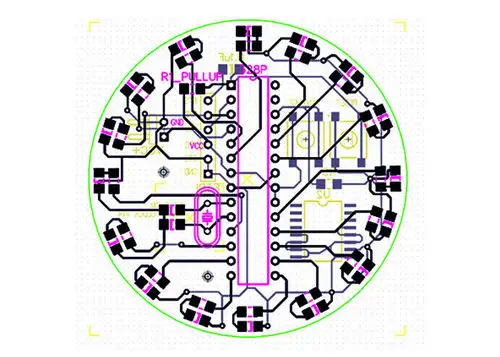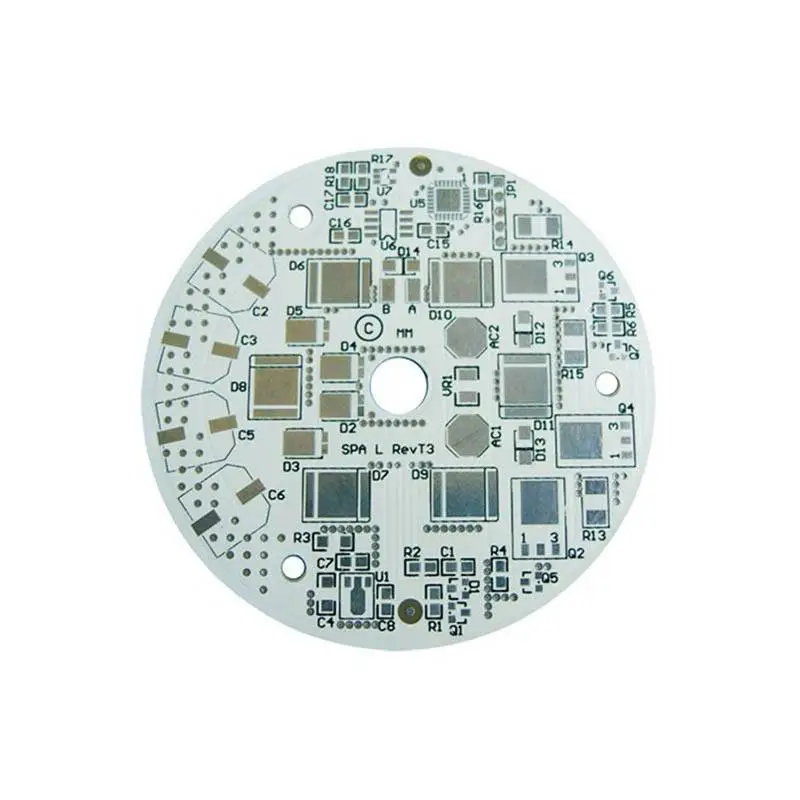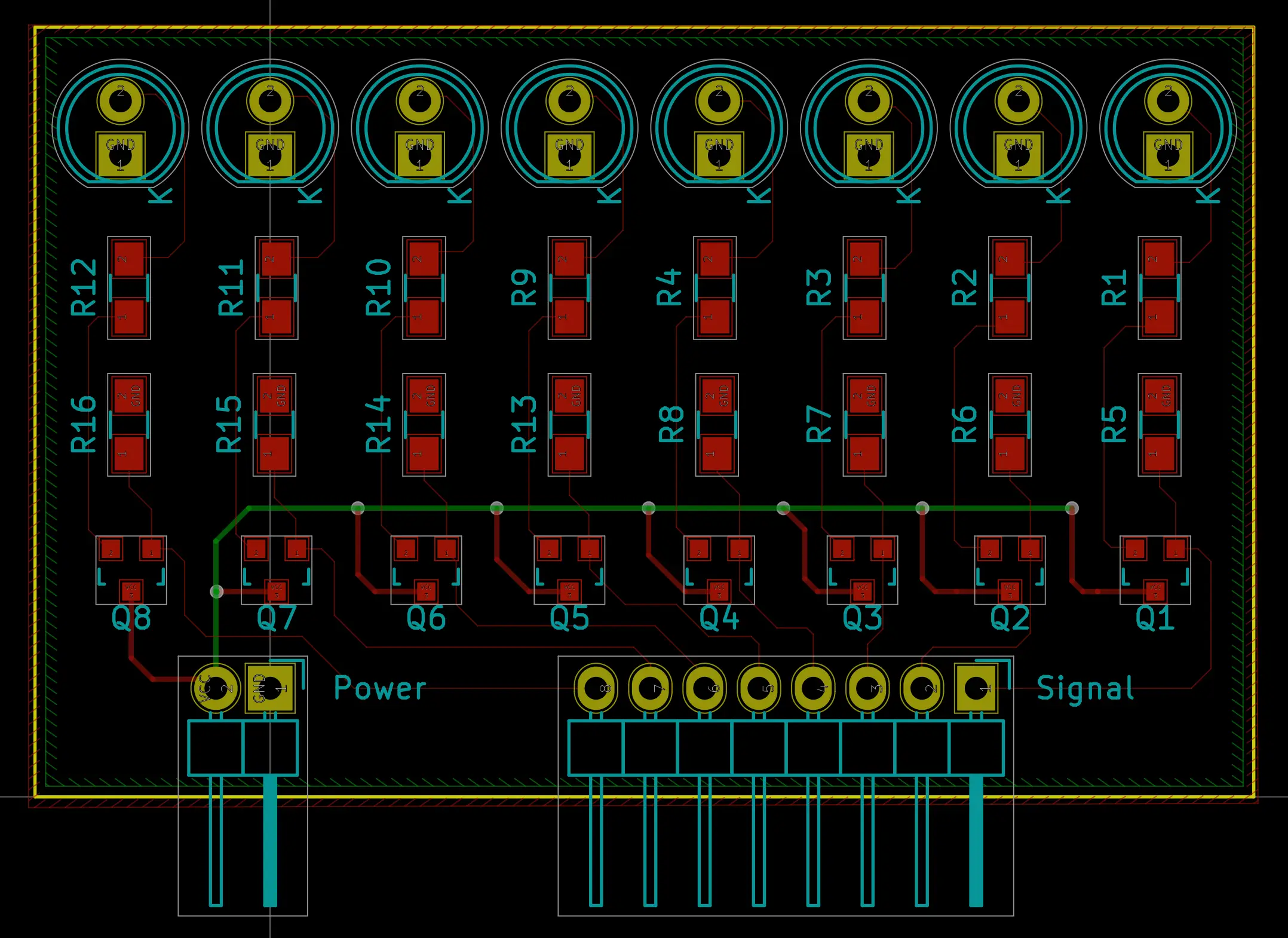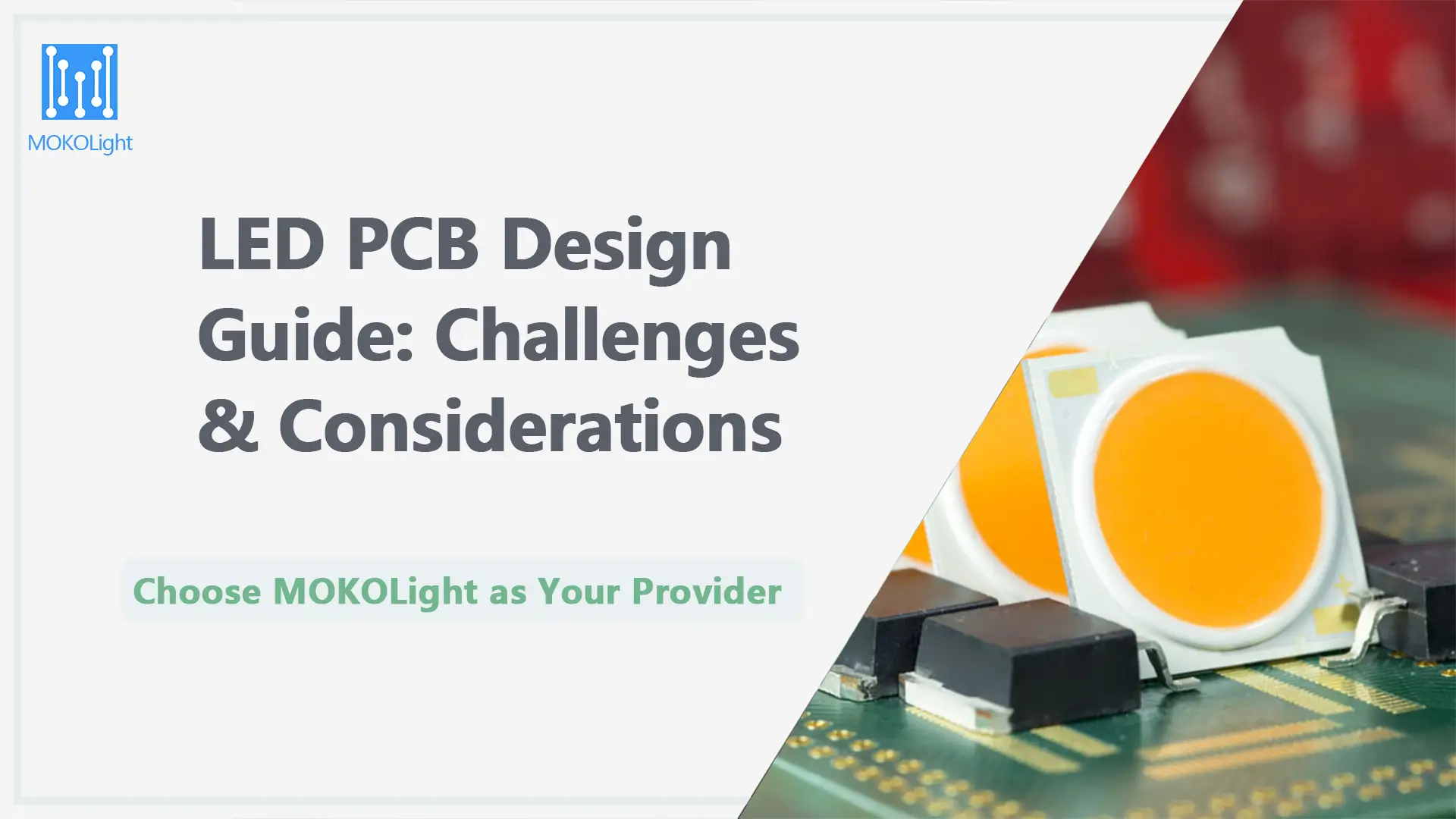You can find LED PCBs everywhere in almost every electronic device on the market. LED PCBs have had a profound impact on our daily lives and they can be used in almost everything from toys you play with at home to street lights outside your window. The integration of LEDs onto the Printed Circuit Board or PCB is a major technological innovation that has revolutionized electronics. Thanks to their extensive advantages such as high efficiency, low cost, and compact structure, LED PCBs have quickly taken up numerous applications across multiple industries. Therefore, it’s essential to learn more about LED PCB design to suit the needs of LED manufacturers. We’ll mainly explore the design aspects of LED PCBs in this article, and we look to help you design the right LED PCBs to suit your own requirements.
Why Use LED PCBs in a Design?
As the core of LED lighting, LED PCBs are highly favored by a wide range of lighting applications due to the beneficial features they offer. Here we’ve listed some merits coming with using LED PCBs in the design.
Light weight and small size
The lightweight and low profile of LEDs contribute to their use in electronics such as computers, smartphones, vehicle lights, spotlights, traffic lights, and more.
Efficient power consumption
To save electricity costs, most residential lighting is turning to LEDs as they can cut down energy consumption by up to 80%.
Moisture and dust resistant
Good-quality LED PCBs are less vulnerable to moisture and dust. They are suitable for any industrial lighting application that requires prevention from moisture and dust.
Longer lifespan
LEDs boast a lifespan of up to 25 times that of traditional light sources, which has attracted many automotive and appliance manufacturers.
Mercury-free
Due to the presence of mercury, traditional bulbs have a significant negative impact on the environment. In contrast, LEDs are free of mercury, which means they can be easily recycled without requiring complex disposal methods. Therefore, LEDs cause far less environmental pollution as compared to traditional lights.
High efficiency
Compared to traditional bulbs, LEDs utilize most of the electrical energy for lighting rather than heating. They waste only a fraction of the energy for heating, resulting in dramatic savings in power costs.
Traditional bulbs dissipate most of the energy in the form of heat. Even though the heat generated by LEDs accounts for about 20% of the total energy consumption, it suffices to pose a hazard to LED circuits. Therefore, we need to address several major challenges and pay attention to some considerations in LED PCB design.
Several Challenges in LED PCB Design

Here are some of the challenges that we have to address in LED PCB design coming with using LED lighting systems:
Temperature: The heat generated by LED PCBs increases the temperature of the circuit board. Therefore, it’s imperative to take proper thermal management measures to avoid the influence of high temperatures on the lifespan and colors of LEDs.
Lifespan of the light: Although LEDs are known for their long lifespan, as the temperature of LED circuits rises, the lifespan of LEDs decreases.
Color of the light: LEDs work for delivering particular colors for various LED applications. As the temperature of LED circuits increases, the colors of LED lights will vary accordingly.
Heat dispersal is one of the main challenges when designing LED PCBs. To ensure the long lifespan and high efficiency of LED lights, we should implement proper thermal management in critical LED applications.
Key Considerations in LED PCB Design

When designing an LED PCB, you should consider component placement, material selection, thermal management, tracking, and the finish to make electrical connections on the board. With an appropriate design, you will obtain a board that allows the LEDs to operate properly.
Component placement
While it may be tempting to throw LEDs and other components randomly onto the board, proper component placement is critical for LED PCB design. Good placement lays the foundation for cost reduction, ease of manufacture and high quality.
In addition to LEDs, other components such as connectors, active and passive components, resistors and thermistors need to be placed onto the LED PCB board. To avoid an overvoltage event on the board, a suitable distance between components is required. Therefore, when designing an LED PCB, we need to consider the creepage (the shortest distance between components) and the clearance (the distance between components measured through the air).
PCB materials
There are the two most preferred choices among various PCB materials for LED applications: FR4 and insulated metal substrate (IMS), each with its own merits and demerits in terms of cost or thermal performance. The materials used for LED PCB design should help remove excess heat from the board while providing electrical insulation of conductors and electrical connections between individual components.
Most LED circuit boards utilize aluminum as the metal base layer because the aluminum base aids in heat dissipation and thermal management. Above the aluminum base is the dielectric film with the top layer comprised of the copper circuit as well as the solder mask. We refer to this type of structure as insulated metal substrate (IMS).
Thermal management
Excellent thermal management is critical to LED PCB design because high temperatures can shorten the lifespan of LED lights and change the color of the light. Therefore, aluminum cores, thermal vias, and heat sinks are typically used in LED circuit board designs to dissipate the heat from the conductors and the components. Component placement and LED arrangement should be taken into account in the PCB design for even heat distribution and effective thermal management to ensure reliability and proper function.
Tracking
The tracking process typically takes place after the components are placed. Through careful tracking, we can avoid open and short circuits as well as crosstalk to ensure high quality and reliability. Proper trace routing allows all networks to connect properly free of interference from other network connections. An adequate track width prevents overheating by controlling the amount of current throughout the board. In addition, designers should also consider tracking space and mounting holes to prevent some manufacturing problems.
Finishes
The board’s finishes serve two essential functions – protect the exposed copper and provide a surface for the components soldered onto. Examples of common finishes are HASL (Hot Air Solder Leveling), OSP (Organic Solderability Preservative), electrolytic nickel/gold, and immersion tin/silver, each with its relative merits and demerits. Therefore, finding the most suitable finish is not easy and it requires a combination of factors such as the pros and cons of each finish, the expectations of the board, and the budget for the project.
Types of LED PCB Designs
Here are the most common types of LED PCB designs:
Single-sided LED PCB design
A single-sided LED PCB is a special type of circuit board that has only one conductive layer. They are ideal for low-density design requirements and are simple to design and manufacture. Plus, single-sided LED PCBs are cost-effective, easy to repair, and suitable for high-volume orders.
Double-sided LED PCB design
As its name suggests, a double-sided LED PCB refers to a board with circuit traces on both sides. With greater design flexibility, lower cost, good heat dissipation and stability, double-sided LED PCBs are perhaps the most preferred PCB type in the LED industry. They are suitable for LED applications that require more complex circuit designs. They typically employ two methods to assemble components: Through Hole Technology (THT) and Surface Mount Technology (SMT).
Multilayer LED PCB design
Unlike double-sided PCBs that contain only two layers of conductive material, multilayer LED PCBs must consist of more than two layers of printed circuit boards. They are suitable for the construction of hardware LED lighting systems. LED PCBs are designed as multilayer boards with many advantages such as small size and lightweight, higher assembly density, better durability and flexibility, powerful single connection point, etc.
The Criteria for Choosing LED PCB Design Service Provider

A good LED PCB manufacturer can deliver quality products while casting preferred competitive prices. Below are some tips on helping you select the right LED PCB design service provider.
On-time delivery
On-time delivery is a critical job for businesses as every delay can lead to lost sales opportunities. Faster lead times mean you can have your products and start your business sooner. It helps get your products to market in shorter turnaround times.
Specialization
Some customers consider manufacturers as their partners who produce products based on their design ideas. Therefore, LED PCB design experts are required to provide professional advice on the optimal design to reduce cost without compromising quality.
Expertise
LED PCB design often needs to be done through specific software. Therefore, the service provider should have designers who are good at LED PCB design and well conversant with the software.
Customer support
We should opt for manufacturing companies that have excellent customer service and are able to provide useful information for customers. Their knowledgeable technical personnel is always ready to respond to inquiries.
Choose MOKOLight as Your LED PCB Design Service Provider
A good LED PCB design should give the circuit board many advantages, such as light weight and compactness, high efficiency and low power consumption, dimensional stability, good thermal capabilities and competitive pricing. At MOKOLight, with our knowledge of circuit boards and LED technology, we can provide custom circuit board solutions to suit your application and requirements. We are with you every step of the way throughout the process from initial design and prototyping to assembly and fabrication. Our qualified engineers use the latest CAD software to help you design LED circuits in single, double or multilayer PCBs. Please contact us directly for questions or talk to our team of experts to explore our PCB design, manufacturing and assembly capabilities.




